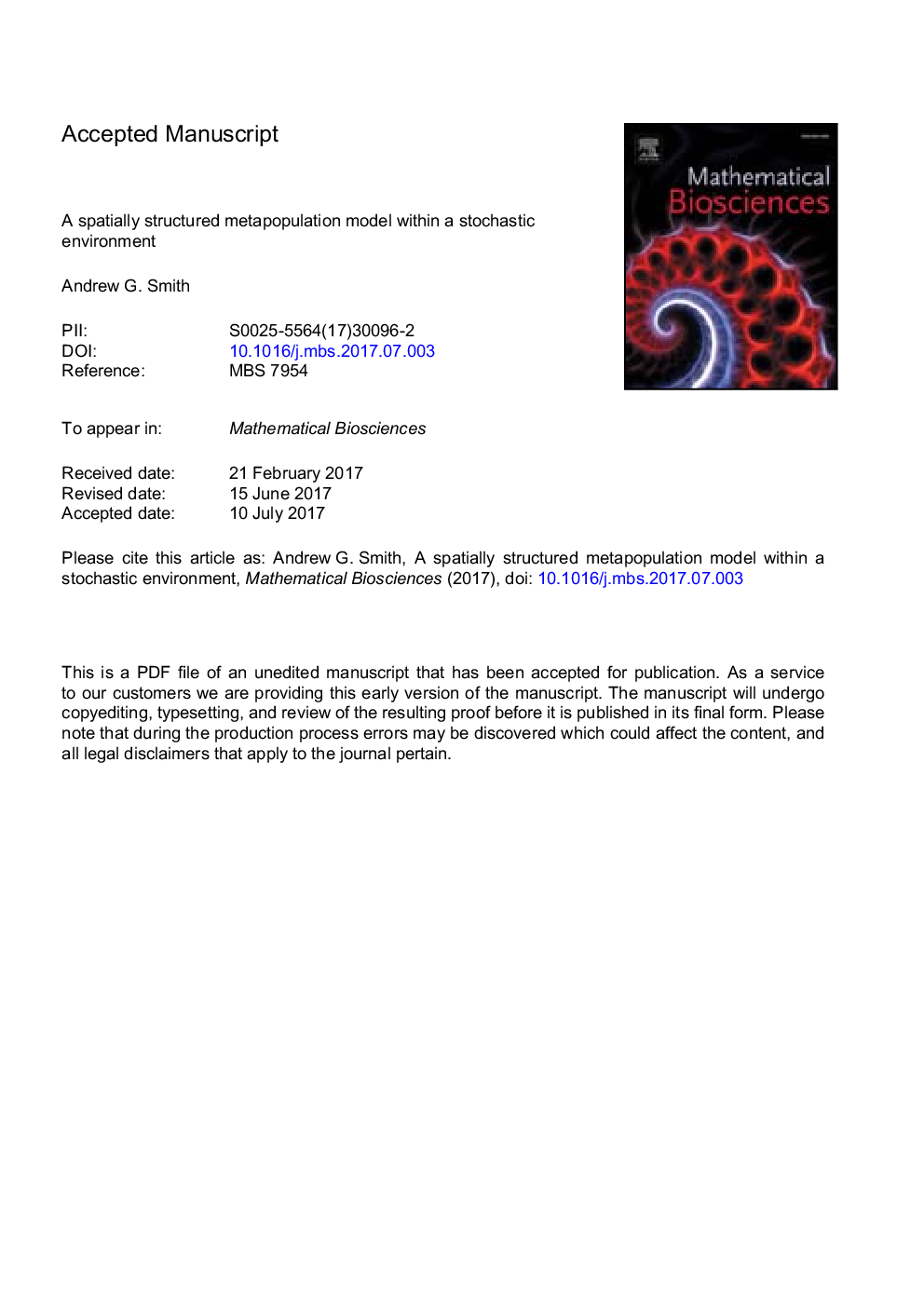| Article ID | Journal | Published Year | Pages | File Type |
|---|---|---|---|---|
| 5760368 | Mathematical Biosciences | 2017 | 31 Pages |
Abstract
Populations often exist, either by choice or by external pressure, in a fragmented way, referred to as a metapopulation. Typically, the dynamics accounted for within metapopulation models are assumed to be static. For example, patch occupancy models often assume that the colonisation and extinction rates do not change, while spatially structured models often assume that the rates of births, deaths and migrations do not depend on time. While some progress has been made when these dynamics are changing deterministically, less is known when the changes are stochastic. It can be quite common that the environment a population inhabits determines how these dynamics change over time. Changes to this environment can have a large impact on the survival probability of a population and such changes will often be stochastic. The typical metapopulation model allows for catastrophes that could eradicate most, if not all, individuals on an entire patch. It is this type of phenomenon that this article addresses. A Markov process is developed that models the number of individuals on each patch within a metapopulation. An approximation for the original model is presented in the form of a piecewise-deterministic Markov process and the approximation is analysed to present conditions for extinction.
Related Topics
Life Sciences
Agricultural and Biological Sciences
Agricultural and Biological Sciences (General)
Authors
Andrew G. Smith,
